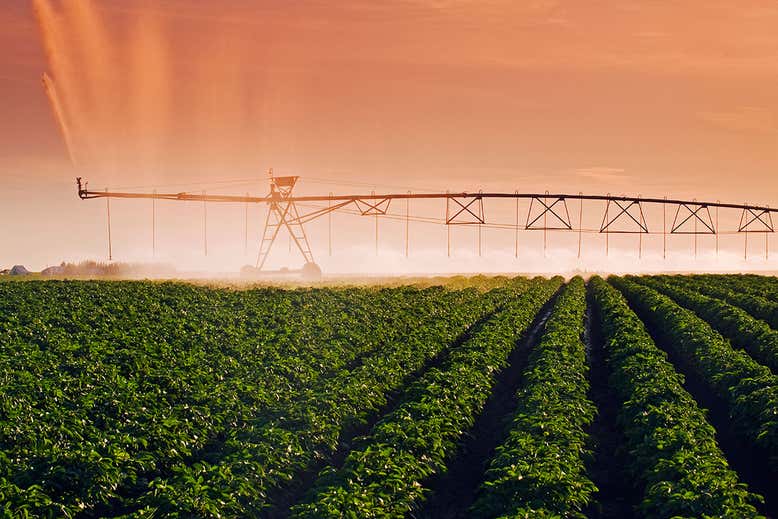Billions more people could have difficulty accessing water if the world opts for a massive expansion in growing energy crops to fight climate change, research has found.
The idea of growing crops and trees to absorb CO2 and capturing the carbon released when they are burned for energy is a central plank to most of the Intergovernmental Panel on Climate Change’s scenarios for the negative emissions approaches needed to avoid the catastrophic impacts of more than 1.5°C of global warming.
But the technology, known as bioenergy with carbon capture and storage (BECCS), could prove a cure worse than the disease, at least when it comes to water stress.
Fabian Stenzel at the Potsdam Institute for Climate Impact Research in Germany and his colleagues project that the water needed to irrigate enough energy crops to stay under the 1.5°C limit would leave 4.58 billion people experiencing high water stress by 2100 – up from 2.28 billion today. That is 300 million more people than a scenario in which BECCS isn’t used at scale and warming spirals to a devastating 3°C.
“I was a little bit shocked. The takeaway message is, so far, we haven’t looked at side effects enough. To limit all the trade-offs that we might face in terms of climate change and climate change mitigation, it’s really important to look at the holistic Earth system,” says Stenzel.
The analysis found high water stress, which is when the ratio of water demand to supply is more than 40 per cent, would expand to previously unstressed parts of the world due to the need for new BECCS crop plantations. South America and southern Africa would both be hit hard.
The upper-end projection of 4.58 billion affected people assumes a total of 6 million square kilometres of crops grown for BECCS, limited use of sustainable water and a global population reaching 9 billion by 2100.
Previous studies have warned that BECCS’s potential to mop up emissions may be limited because the enormous land it requires would affect food production and biodiversity.
Stenzel and his colleagues’ research doesn’t mean we should allow unchecked climate change, but suggests BECCS has to play a smaller role in how we remove emissions from the atmosphere than the central one envisaged by some. Stenzel still expects BECCS will be needed, but as just one of a suite of approaches, such as burning biomass to put charcoal in soil, reforestation, direct air capture and more. “We will need some sort of negative emissions because, as humanity, we are stupid and slow,” he says.
Peter Smith at the University of Aberdeen, UK, says: “This is another warning that we cannot rely on BECCS at the scale of hundreds of millions of hectares, as this has adverse consequences for water. The more we reduce emissions now, the less we will need to rely on negative-emission technologies like BECCS in the future.”
Wil Burns at American University in Washington DC says the research doesn’t fully account for ways that BECCS’s hunger for water can be curbed, such as by picking the right trees to plant in high latitudes with few people.
Journal reference: Nature Communications, DOI: 10.1038/s41467-021-21640-3
Sign up to our free Fix the Planet newsletter to get a dose of climate optimism delivered straight to your inbox, every Thursday
By

